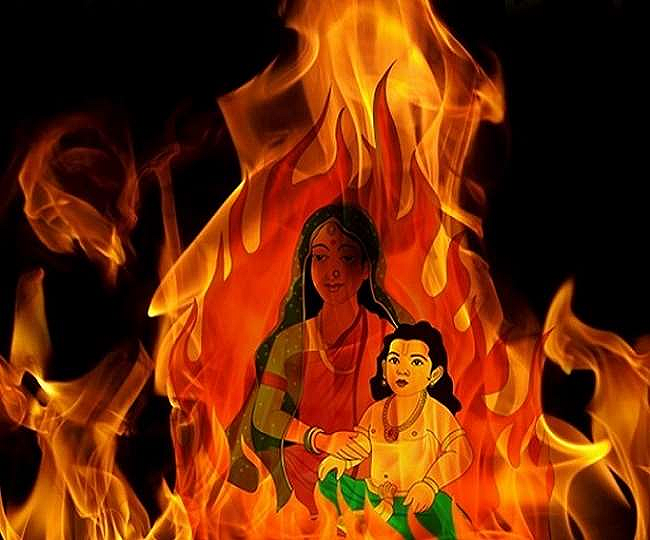After Diwali, Holi is the favorite festival of people. Holi, the vibrant festival of colors, is the most prominent festival celebrated across India. The festival marks the arrival of spring, the triumph of good over evil, and a time for togetherness, love, and festivities. Holi is observed with great enthusiasm, featuring rituals like Holika Dahan, playing with gulal (colored powders), singing, dancing, and feasting on delicious sweets. As we approach Holi 2025, let's explore the date, historical background, and significance of this grand festival.
When is Holi 2025 (Date and Timing)
Holi is observed on the full moon day of the Hindu lunar month of Falgun, which usually falls in March. The festival of joy and colors Holi will be celebrated this year 2025, on March 14, while Holika Dahan will be celebrated a day before Holi on March 13, 2025.
Purnima Tithi Begins - 01:05 AM on Mar 13, 2025
Purnima Tithi Ends - 02:53 AM on Mar 14, 2025.
History behind the festival of colors
Holika Dahan and the Legends of Prahalad

The origins of Holi are steeped in Hindu mythology, which is further enhanced by a variety of tales and traditions. One well-known story concerns the myth of Hiranyakashipu, a haughty and strong demon ruler, and his son Prahlad, who disobeyed his father's orders by worshiping the god Vishnu. Hiranyakashipu plotted with his sister Holika to burn Prahlad alive in an attempt to murder him. Holika died in the fire, but Prahlad survived thanks to his belief in Lord Vishnu. A major motif of Holi celebrations, the fable represents the triumph of good over evil.
The Legends of Radha and Krishna

Holi is celebrated with great zeal in the Braj area of India, especially in Vrindavan and Mathura, where Lord Krishna was raised. According to legend, Lord Krishna, who is famed for having a dark complexion, was self-conscious over Radha's beautiful skin. Yashoda, his mother, jokingly said to appease his son that to color Radha in the same color that resembles his skin color. It is thought that the fun smearing of colors during Holi celebrations originated from this joyful pastime. This region's Lathmar Holi is a colorful and exuberant display in which women playfully beat men with sticks, or laths, while the men attempt to protect themselves with shields.
The Legends of Kamadeva

Some people believe that Holi is also linked to the story of Kamadeva, the god of love. When Lord Shiva was in deep meditation after the death of his wife Sati, Kamadeva attempted to awaken him to restore balance to the world. In anger, Shiva burnt Kamadeva to ashes. However, on the request of Kamadeva's wife, Rati, and the gods, Shiva resurrected him, though without a physical form. Holi is sometimes seen as a celebration of love and sacrifice, commemorating Kamadeva's sacrifice and subsequent revival.
Significance of Holi Celebration: More than just colors
Holi, the vibrant festival of colors, holds deep cultural and religious significance. It marks the arrival of spring, symbolizing new beginnings and the triumph of good over evil. The burning of Holika, the night before Holi, represents the destruction of negativity. On the day of Holi, people joyfully drench each other in colored powder and water, fostering unity and dissolving social barriers. It's a time for forgiveness, letting go of past grievances, and strengthening community bonds. Holi's playful spirit and colorful exuberance make it a cherished celebration of life, love, and happiness.
Holi: Tradition and rituals
The festival Holi is marked by the lighting of bonfires, the playing of colors, and the consumption of traditional delicacies. The bonfire is lit on the eve of Holi, known as Holika Dahan, to symbolize the destruction of evil. People gather around the fire to sing and dance, and to offer prayers for the well-being of all. The next day, known as Rangwali Holi, is a day of fun and frolic. People smear each other with colored powder and water and dance to the beat of drums and music. The streets come alive in color the next day, Rangwali Holi, as many celebrants throw water and gulal (colored powders) at one another in a lighthearted celebration of Radha and Krishna's love.
In Holi, colors are important because they symbolize different feelings and aspects of the natural world. Green represents the renewal of life and the arrival of spring, blue is connected to the heavenly Krishna, yellow to prosperity and fresh starts, and red to love and fertility. In addition to being entertaining, mixing these colors together fosters a sense of community and celebrates the changing of the seasons.
Holi is more than just a festival of colors; it's a celebration of life, love, and the triumph of good over evil. It's a time to strengthen bonds of community, let go of negativity, and embrace the joy and vibrancy of spring. By understanding the history, significance, and traditions associated with Holi, and by celebrating it responsibly, we can truly appreciate the beauty and depth of this ancient and cherished festival.
Let the colors of Holi paint your life with happiness, prosperity, and endless possibilities!
Happy Holi!
Follow 바카라 Experiences:
| | |















